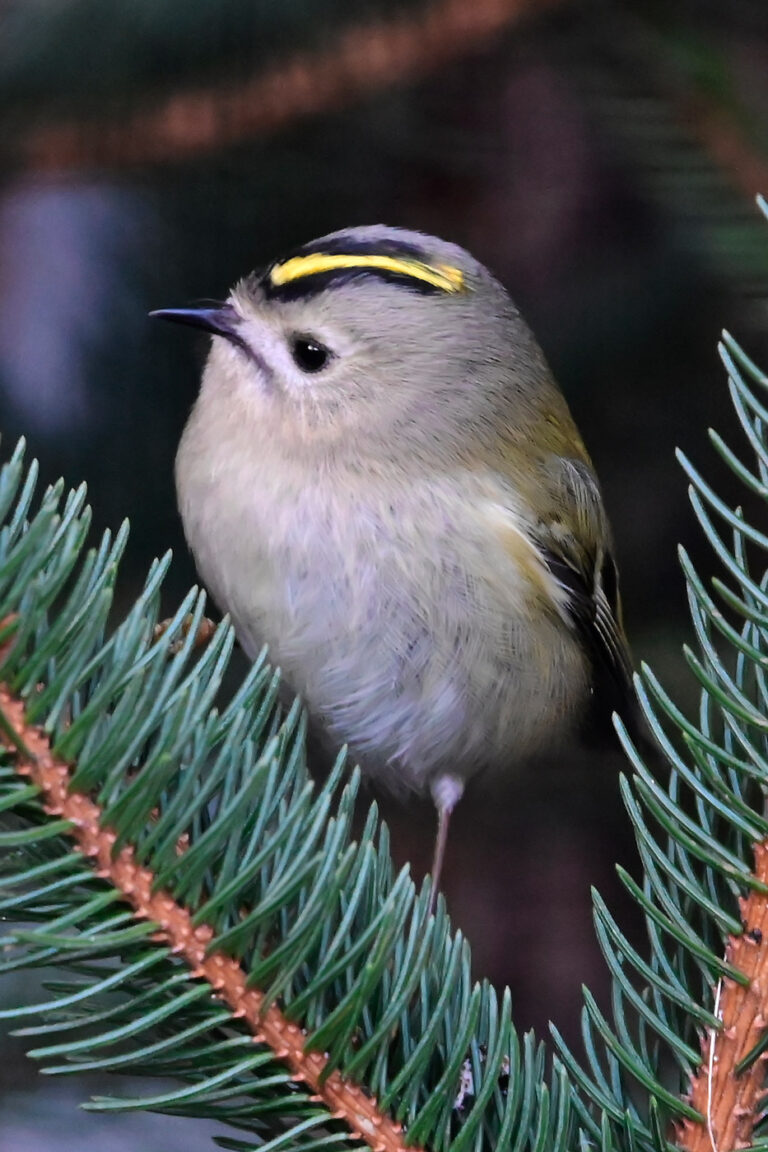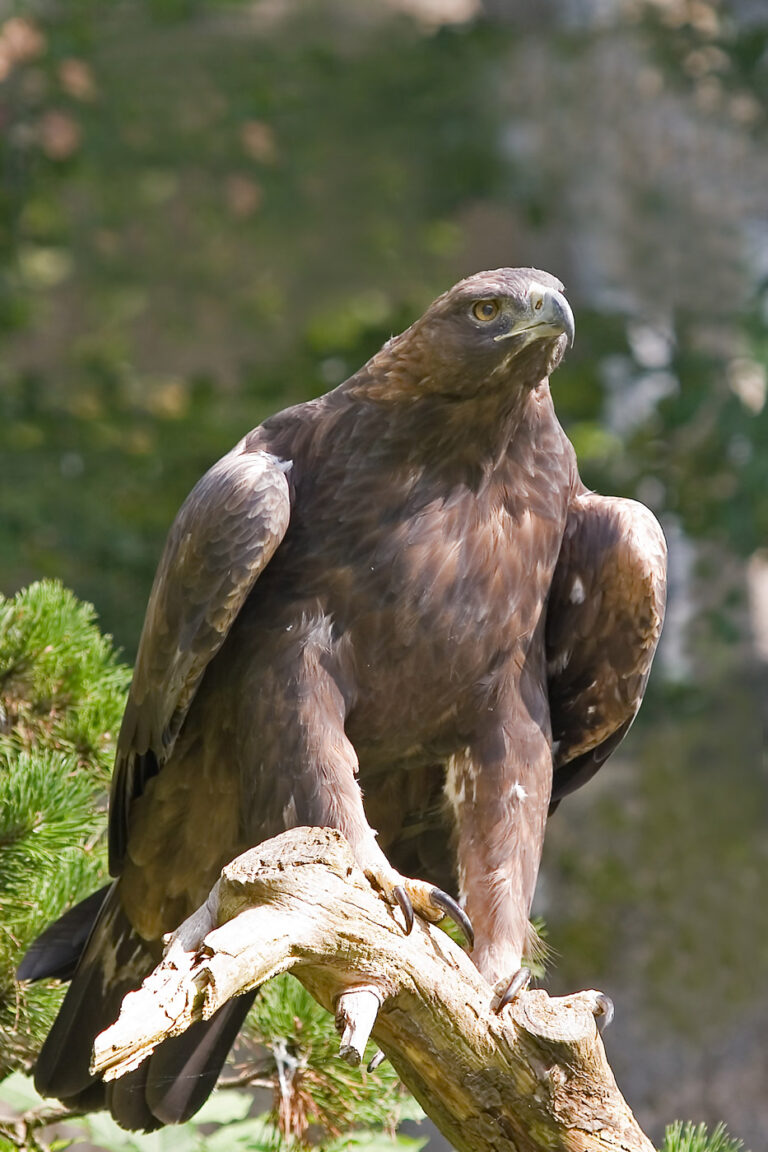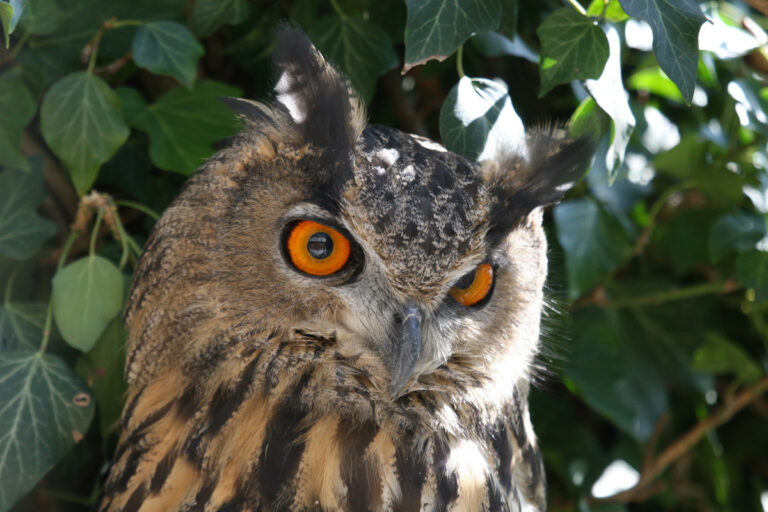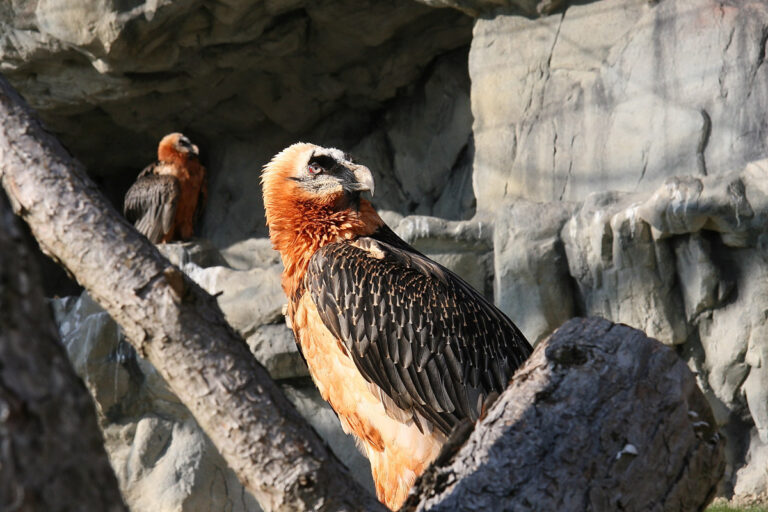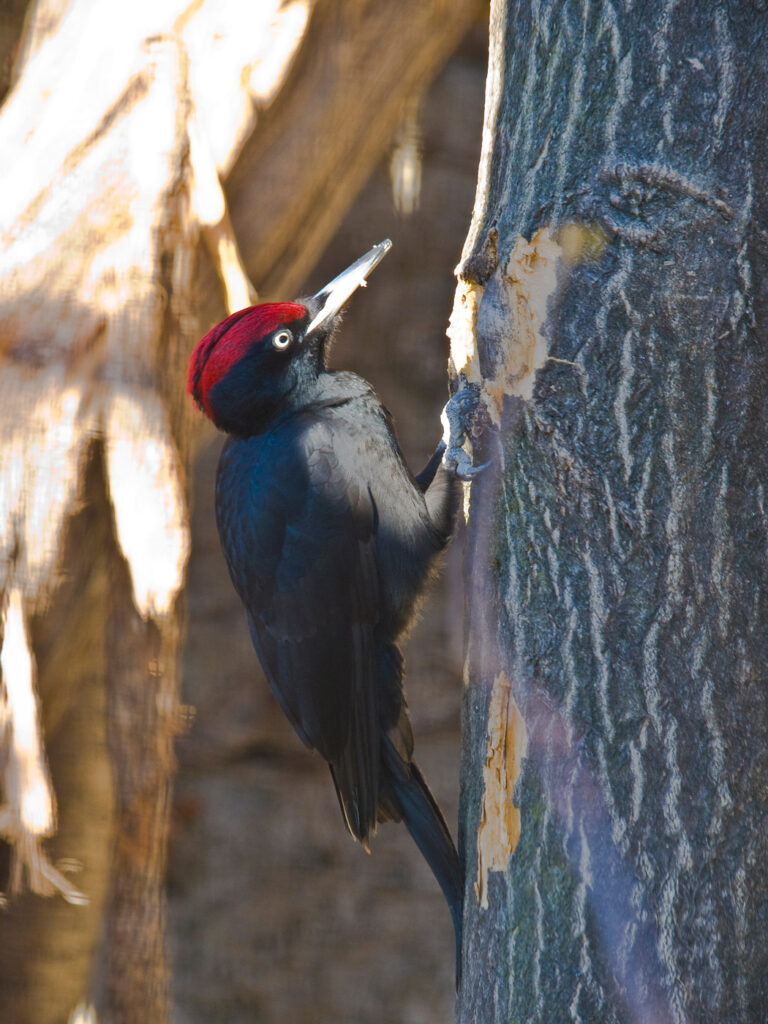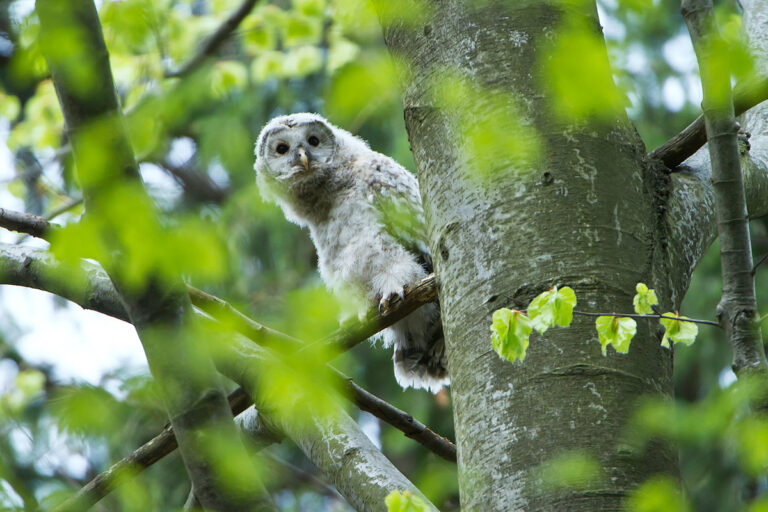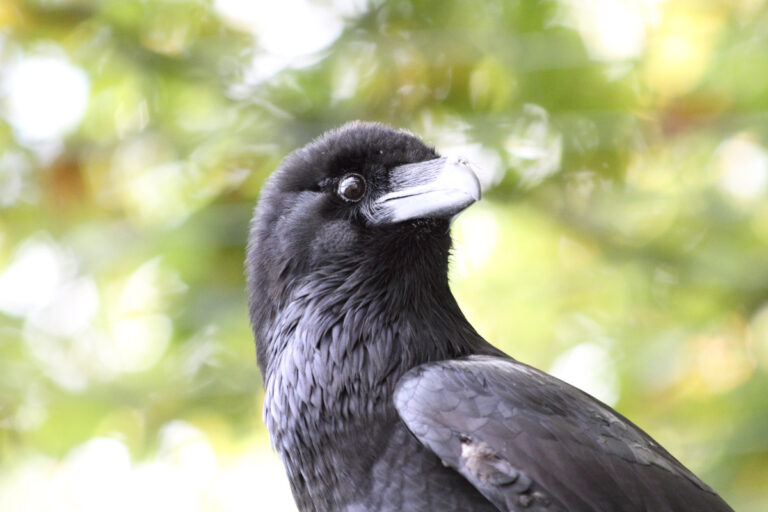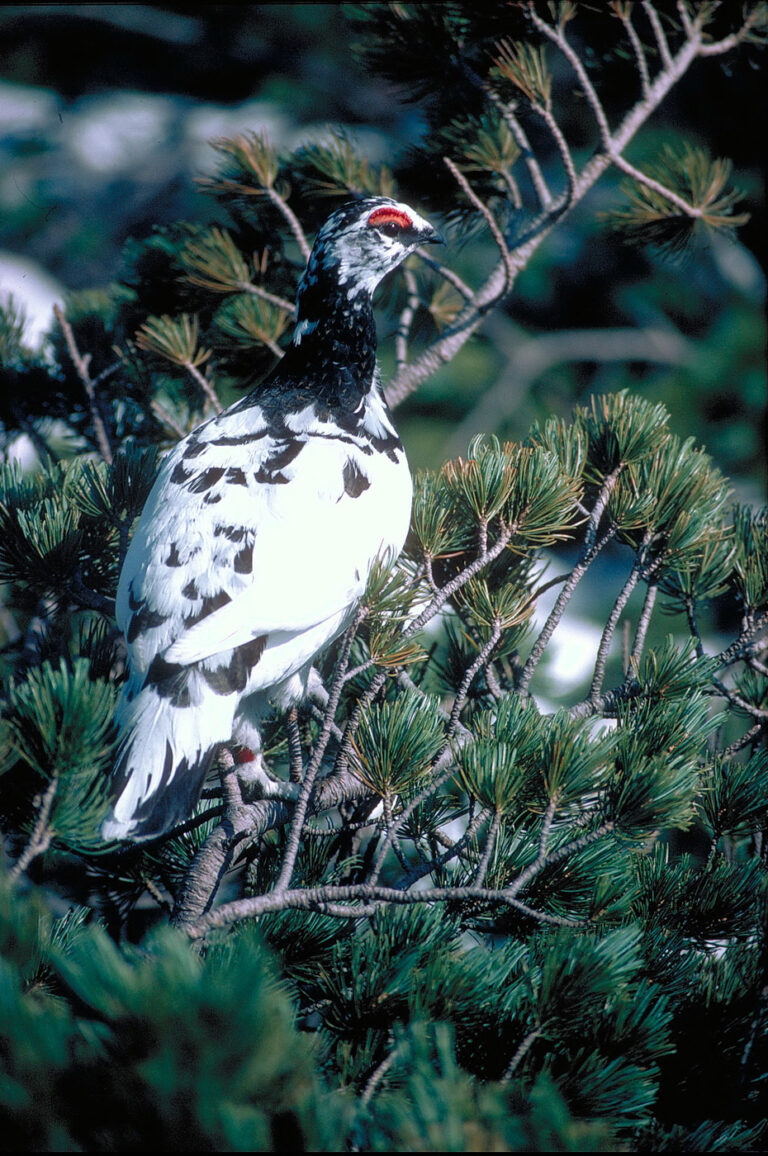Northern Bald Ibis
The Northern Bald Ibis is neither a forest bird nor a raven, but an ibis that breeds in rocky niches and forages for insects and field mice in meadows and open areas. During the breeding season, the pairs vigorously defend their nest site and nesting material with beak thrusts. The beak duels may look fierce, but they pass off without injury because the long, curved beak is neither sharp nor hard. Traces of the Northern Bald Ibis as a breeding bird in the Alps disappeared in the 16th century. The reason for its extinction was direct persecution - the young birds were considered a delicacy. An additional cause was presumably the onset of a cold period. Only two widely separated refuges in North Africa (Morocco, Algeria) and Asia Minor (Turkey, Iraq, Syria) remained, but these colonies suffered dramatic declines due to the use of pesticides and hunting. In protected areas and through breeding in zoos, the Northern Bald Ibis was saved from its final disappearance. The behaviour of the Northern Bald Ibis has been intensively researched at the Alpine Zoo, and the European conservation breeding programme has been coordinated from Innsbruck since 1988. The Alpine Zoo supports the protection of the last wild Northern Bald Ibises and research projects on reintroduction methods.
- Northern bald ibises have their own greeting ritual. With jerky head movements, they show their feathered heads and thus establish contact with their conspecifics.
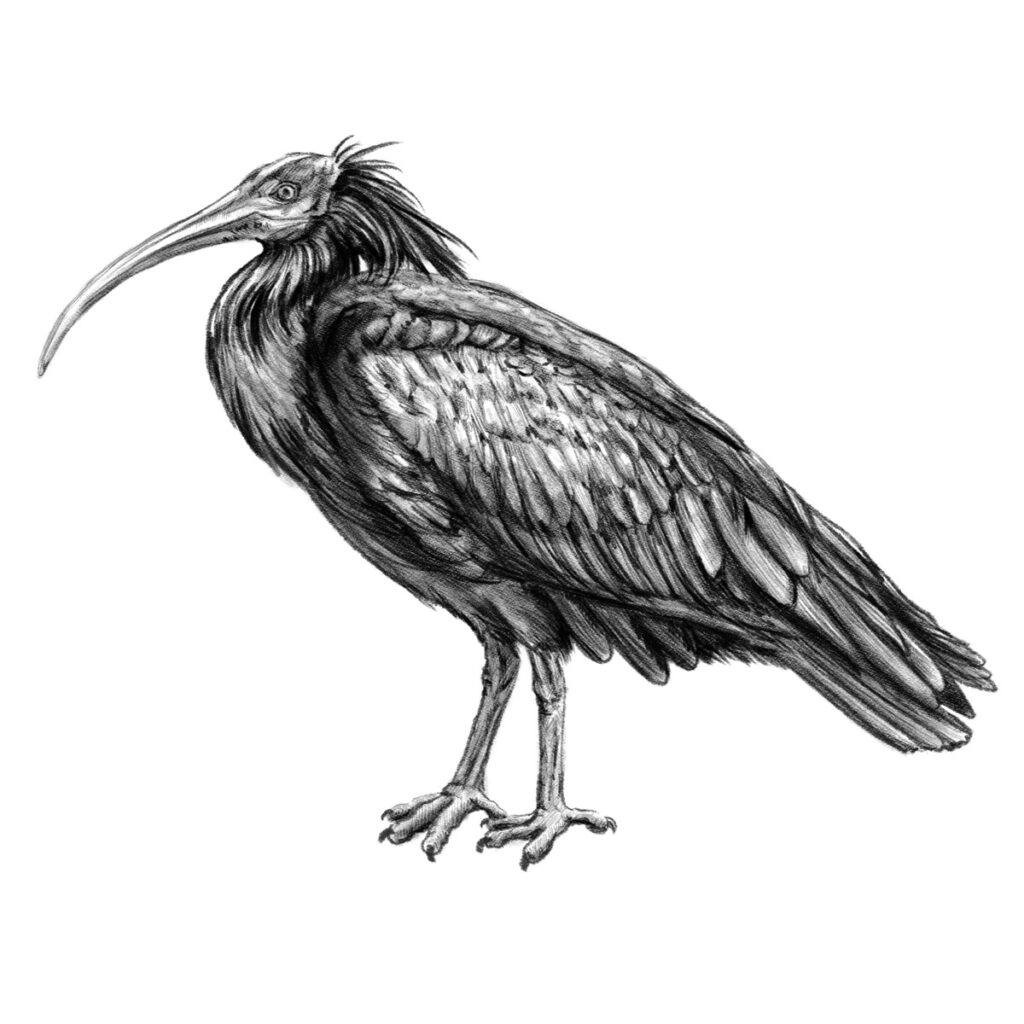
SCIENTIFIC NAME
Geronicus eremita
AGE
- up to 35 years
FOOD
- Amphibians
- Insects
- Small invertebrates
FINE
- only the human being
WEIGHT
- up to 1.3 kg
Wingspan: 70 - 75 cm

